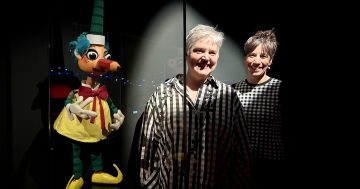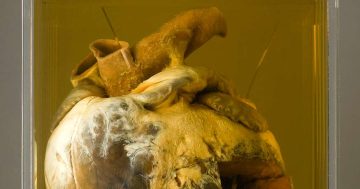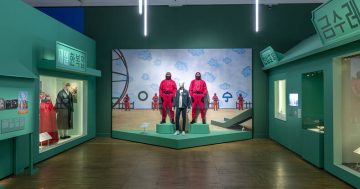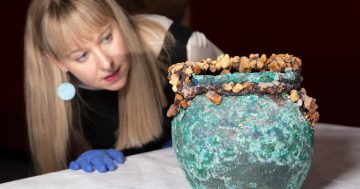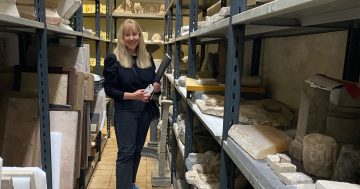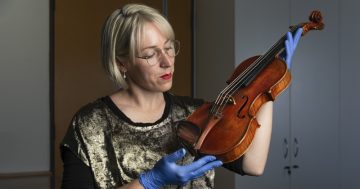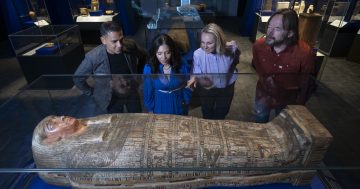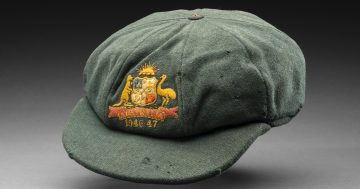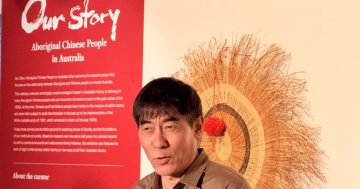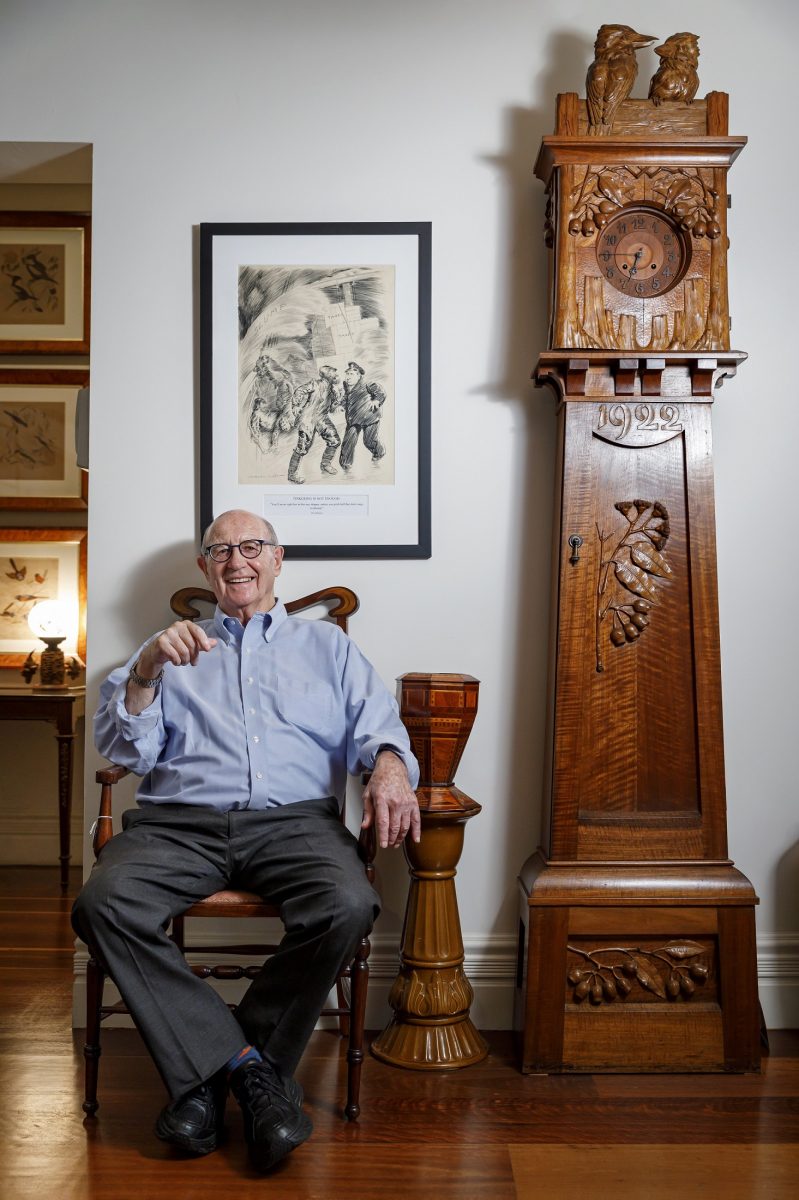
Trevor Kennedy with a Robert Prenzel longcase clock, from the collection. Photos: National Museum of Australia.
A treasure storehouse of all things Australian has been secured by the National Museum of Australia for more than $8 million in a ground-breaking acquisition.
Journalist, editor and media executive Trevor Kennedy spent 40 years amassing a unique collection of Australiana, bolstered in 2005 when he bought the Ruth Simon collection of Australian decorative arts.
Throughout his career, and particularly his years spent as editor of The Bulletin, Mr Kennedy maintained a deep interest in the history of Australia and dedicated himself to creating a collection of material that reflected his passion.
Mr Kennedy has also donated to the NMA thousands of additional items of historical and cultural significance valued at about $7 million. All the items will become a part of the National Historical Collection (NHC).
The 5000-piece collection features items of rare significance including a magnificent collection of pre-1820 Australian-made furniture; unique objects relating to Federation; art from some of Australia’s most historically and culturally significant colonial artists; a diamond and platinum brooch given by Charles Kingsford Smith to his wife to commemorate his flight across the Pacific; and distinctive pottery and folk art objects.
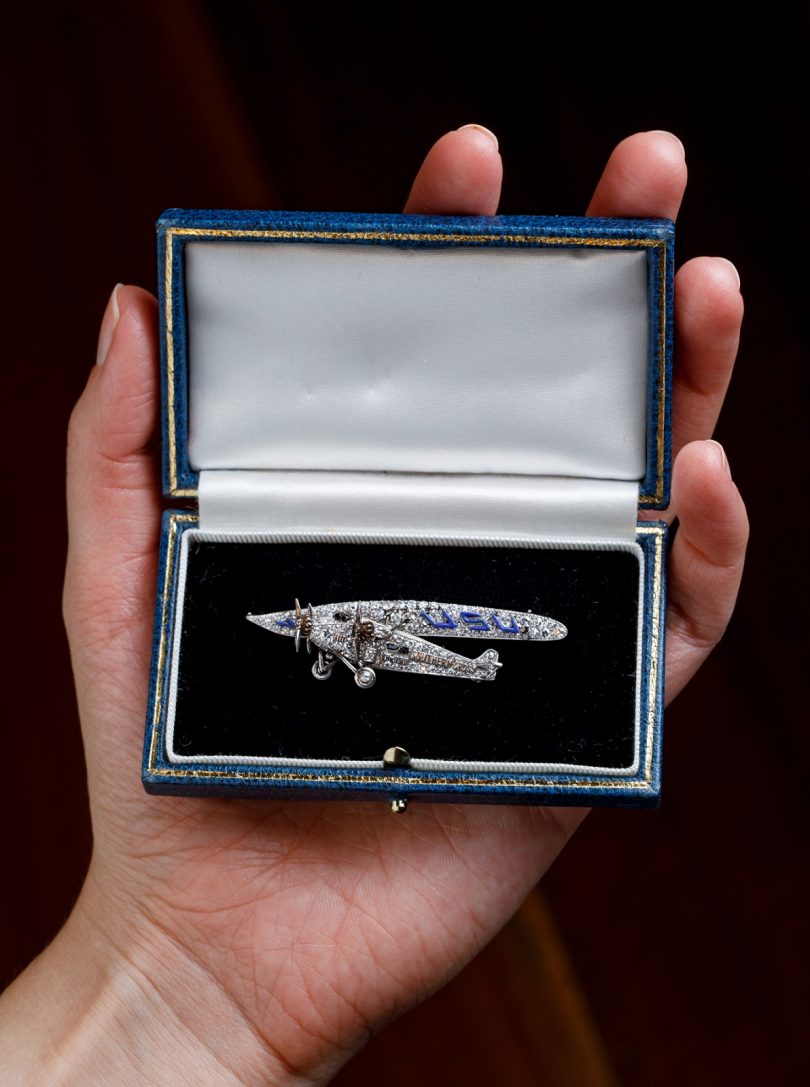
The diamond and platinum brooch given by Charles Kingsford Smith to his wife in 1932 to commemorate his flight across the Pacific.
It also includes the printing proofs for invitations to the opening of Australia’s first Parliament in 1901 and Lionel Rose’s World Champion Bantam Weight Boxing Belt from his 1968 victory over Japan’s Fighting Harada.
National Museum director Dr Mathew Trinca said the purchase was one of the most significant in the institution’s history.
“The breadth and scope of the collection is extraordinary. This unique collection has been brought together by a passionate and avid Australian collector and we are delighted to be able to share it with the nation,” said Dr Trinca.
“The decision by Mr Kennedy to also donate such a substantial part of his collection is remarkable. It is a donation of an unprecedented scale and one that will transform the Museum’s collection forever.”
Dr Trinca said the thousand of items would become a cornerstone of the National Historical Collection and a rich new resource for Australians to explore and interpret the nation’s history.
Mr Kennedy said he was thrilled that the collection had found a new home at the National Museum of Australia and that such a large portion of it could largely stay together, retaining its character and integrity.
”It’s very very satisfying that the museum is going to hold all this stuff together. It’s always been one of my great fears that it’d be dissipated in one fashion or another,” he said.
”The fact that it is going to the National Museum of Australia is a great joy to me.”
Mr Kennedy hopes the collection will be seen and appreciated by generations of Australians across the country, ”giving them the opportunity to explore and better understand our nation’s remarkable history, the quality and traditions of Australian craftsmanship and design, and through this the character unique to this nation”.
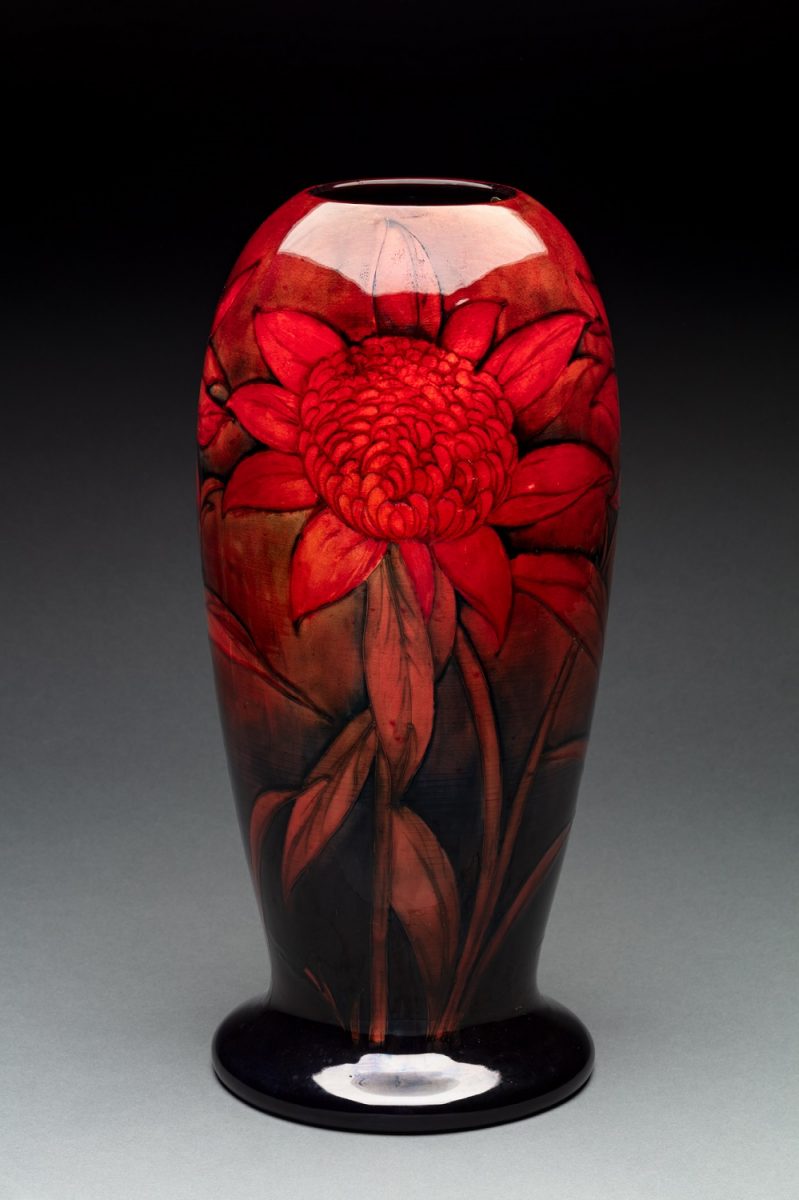
A rare William Moorcroft flambe Waratah Exhibition vase, 1939.
Museum curator Dr Sophie Jensen was instrumental in working with Mr Kennedy over a period of two years to identify items to purchase from his unique collection.
”This collection is the most significant moment in the history of collecting at the National Museum of Australia,” she said. ”Certainly, the most significant collection that I have had the privilege to work on.
”This collection spans not only an incredible amount of time but it is also thematically a collection that really has an object that is going to speak to every Australian.”
She said Mr Kennedy’s passion and energy as a collector of Australiana brought these objects together to create an eclectic and magnificent collection of Australian material culture, history, decorative arts and design.
”This purchase and donation will enrich the stories we explore through the Museum’s existing collection,” Dr Jensen said.
She said the Museum would research, document and digitise the collection in order to have it available online as soon as possible for all Australians to discover and enjoy.
Original Article published by Ian Bushnell on The RiotACT.


